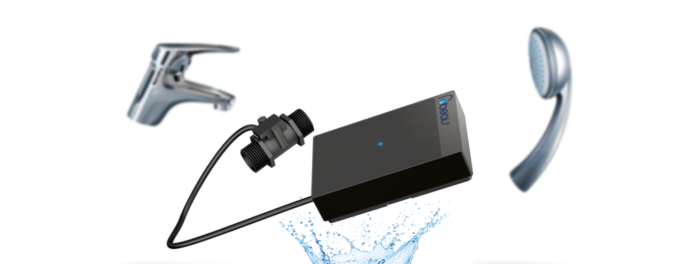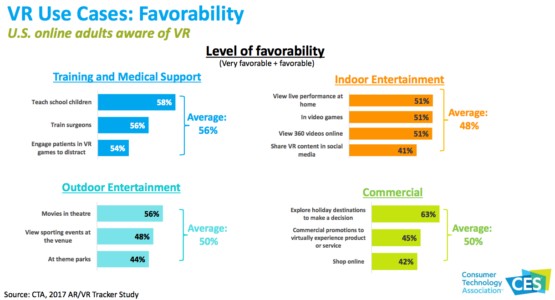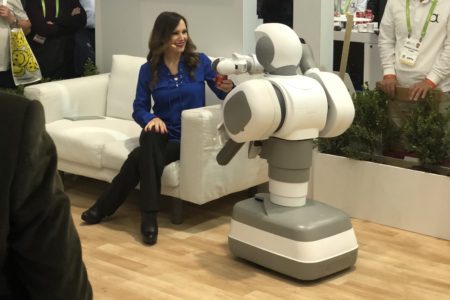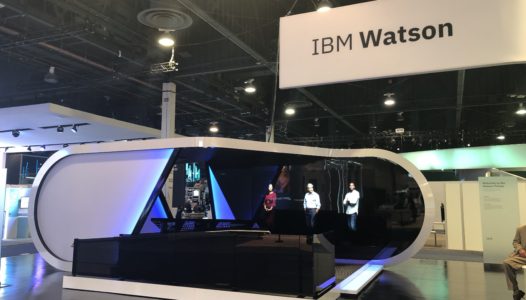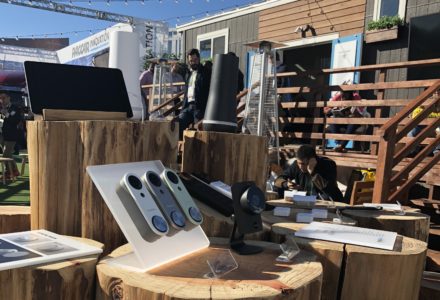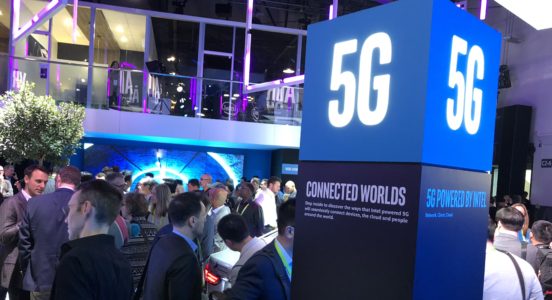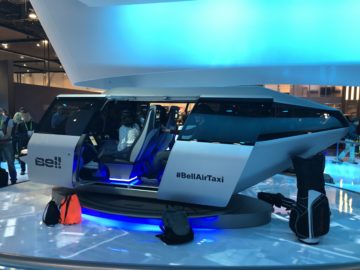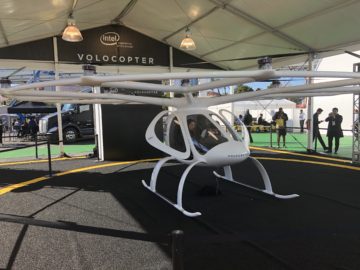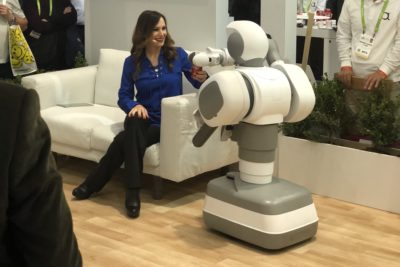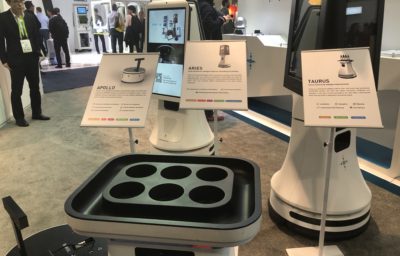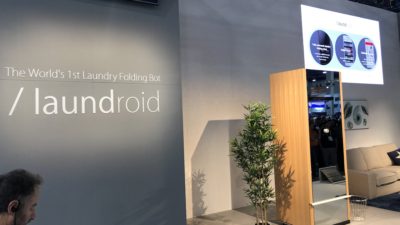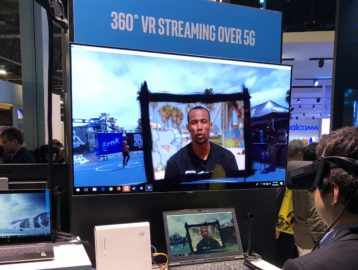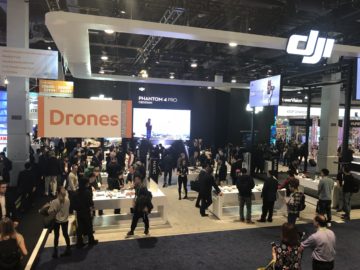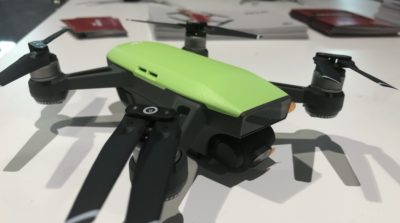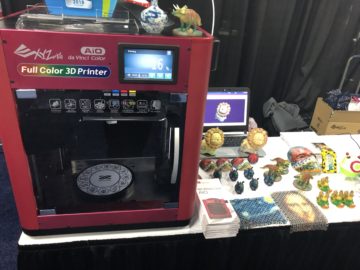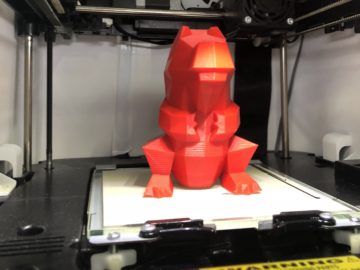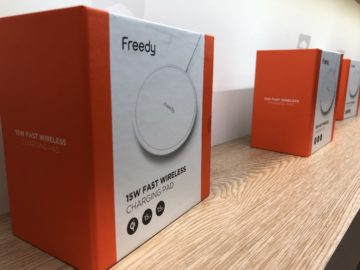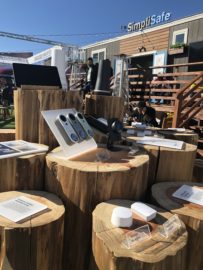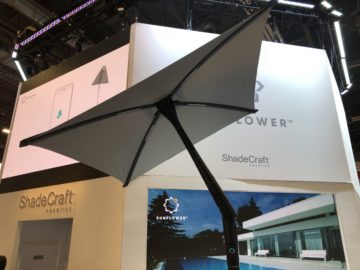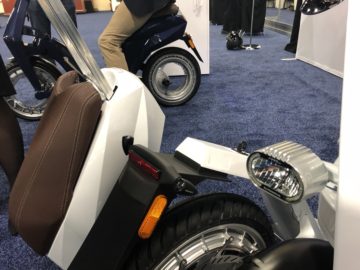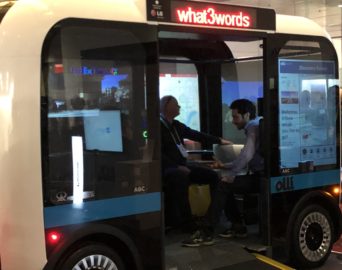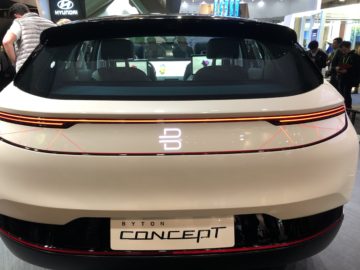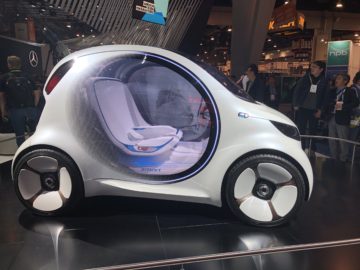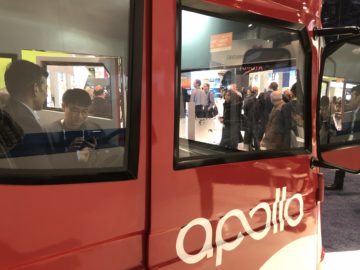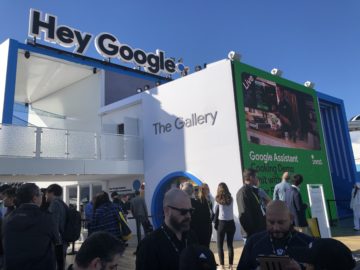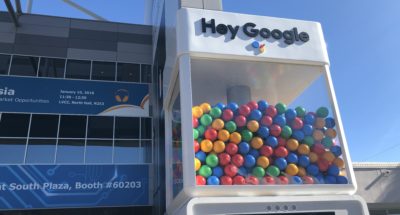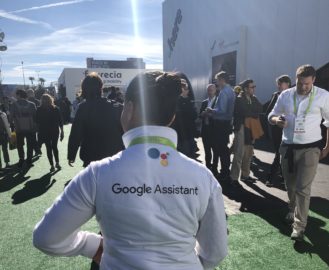
11 thoughts on the future of technology in travel and hospitality from CES 2018
By cameron in Uncategorized
Consumer technology is the bellwether for enterprise. We all know that the expectations gap between consumer and business technology is virtually non-existent.
So the imperative for B2B technologists to adopt a complete consumer-first mentality is clear. There’s simply no way forward any longer: business software and hardware must act, think, and feel like consumer software and hardware. Enterprise users are no longer willing to sacrifice usability or functionality simply because it’s a service or tool they use at work.
Rapid experimentation — and implementation of successful experiments — is the way to stay relevant with today’s consumer. Yes, this means staying current and always paying attention.
That’s why we decided to bring live CES coverage into our mix here at tnooz. We believe that technology is technology, and users are users. We must all fully grasp the latest consumer technology trends to both most effectively serve our fellow business clients, as well as to surprise and delight the travelers and guests that support the travel and hospitality industries.
It’s an exciting time, where small moves create lasting impressions in the minds of travelers. Given that each experiment costs resources — not just time and money, but also opportunity costs — here are 11 thoughts about technology in travel and hospitality, as observed through interactions, conversations, and presentations from around the buzzy CES circus.
#1: Mobility matters
The future of mobility is connected. That’s without a doubt. And travel has a role to play in this expanded definition of what it means to move from point A to B. Dara Khosrowshahi didn’t leave Expedia for an average challenge — travel is about movement, and the industry must consider how mobility plays into its core value proposition. The reality of autonomous cars, helicopters, and small planes is an existential threat to an airline’s business.

One of the major exhibitors in the outdoor experience is Virgin’s Hyperloop One. The company is adding yet another mobility platform to its existing portfolio of ground, air, and space options.
Even United’s Ravi Simhambhatta sees the threat as real, revealing the impact of business model shifts, such as low-cost carriers, can drastically shift airline economics. He said during a panel:
“Our business model would not effectively be able to support that. How do you add value? How do you support our customers? We’ve made adjustments and pivoted the business to adjust to the challenge. That is a key thing to look for: especially things like hyperloop and how it affects our short-haul markets. We have to evolve with it. Things look distant but they can sneak up upon you sooner than you can imagine.”
Car companies continue to maintain an outsized presence across CES. There’s a battle for the soul of mobility — just like a household might exclusively use Alexa, eventually technology-driven car brands could exert a strong loyalty over consumers.
And it’s not just hyperloops and cars — there are startups presenting compact (and quite cool) vehicles for older people and the urban types. Tour operators, hotels, and airports will soon have mobility solutions with small footprints and a cool factor that can help travelers get around all kinds of places.
#2: Connected ops are here
Hotels are complex beasts, and so it’s no surprise that we’ve reached critical mass when it comes to connected operations. A smart building can be run more efficiently, reducing overhead and maintenance costs. Two companies launched smart water gadgets this year, demonstrating how intelligent connectivity is truly going to shift the way hotels build and operate their assets.
Robeau and Stream Labs were two brands exhibting smart water monitors for the home that can easily apply to enterprises like hotels and vacation rentals. Understanding where leaks happen, where there might be water damage happening but hidden beneath drywall, and generally understanding water usage patterns creates a new data point in the matrix of a connected operation.
#3: Unexpected brands fight to maintain relevance
The media is always invited in a night early to preview new products at CES Unveiled. One of the most prominent features was a bevy of big brands showcasing their tech-oriented new products. Moen, Schlage, and D-Link, among others, were all exhibiting tech-oriented products outside of their typical known product line. There are already so many choices when it comes to connected devices — these brands have an uphill battle to be seen as tech-forward.
The large outlays of cash in promoting their products to the techie types at CES is a clear indication of how high the stakes are for these legacy companies. Even in things like locks and showerheads, the competition is fierce. Especially as hotels mirror homes and become connected through the Internet of Things, there are going to be massive orders of connected devices across the world.
#4: VR is still rocky but AR is ready to rock
VR is not quite ready for mainstream. Sure, there are many headsets geared towards gamers, as well as a few enterprise applications for things like training. Yet, the sweet spot of mainstream adoption has yet to be hit. We’ve even asked the question here at tnooz about whether VR is worth the hype. Well, it’s this journalist’s perspective that VR is here to stay but will continue to play primarily in gaming. There are some bright spots for VR in travel: the Consumer Technology Association’s 2018 trends report showed that 63% of consumers were willing to use virtual reality to explore holiday destinations to make a decision. That’s major! Yet VR doesn’t have as many applications
Yet VR doesn’t have the seamless connection to reality that augmented reality does. The ability for AR to layer information on top of existing images makes for plenty of interesting applications across the enterprise.
Imagine an airplane pilot being able to use AR to diagnose certain issues without having to wait on mechanics. And then imagine those mechanics being able to more quickly and accurately fix issues they face. This could lead to a bit less theoretical training in certain positions, getting more employees out into the field sooner, making direct impact on the business. For destination marketers and other in-destination operators, the extra layers of information from AR can also change the narrative when it comes to consumer engagement.
#5: Maybe (not) robots?
Robots were everywhere at CES. There seem to be two categories of bots at the moment: companion bots and task bots. The companion bot category is actually quite entertaining, and has developed rapidly over the past year. These are robots that might greet guests with a tune while they check in, or snap a photo of an event happening around property. These bots exist to entertain and act as an additional personality.
The task-based bots are the ones used to make deliveries in hotels, to check on wifi signals, and to fetch items for staff. These bots have a set purpose, usually limited to a few functions. There’s yet to be the major Swiss Army knife of bots, that might actually replace an employee. These task bots perform a few functions, usually quite rote, that then frees up staff for more value-creating activities. Think greeting a guest rather than waiting on the elevator to drop off a toothbrush.
It’s still quite a leap to imagine robots everywhere. But as each bot evolves to do more than just a limited set of tasks, the investment is going to get far more appealing. And as Savioke’s Tessa Lau mentioned in a panel, the fact that a delivery robot can also do things like offer security or check on WiFi signals really starts to make investing in a robot look appealing. And there’s more opportunities to leverage a delivery robots sensors:
“Another one we’re looking at is tray detection. Trying to determine evidence of previous guests and trying to remove it.”
#6: Smart luggage…is dumb
This was my first time seeing smart luggage in action — no, not the now-ubiquitous smart luggage that will charge your phone, but the new smart luggage that follows its owner. It has sensors in it so that it can avoid people and know where it’s owner is at all times. It just follows along, like a little sentient travel storage companion.
I hate to be the one to say it, but do we really want our airports full of luggage following travelers? Isn’t space already at a premium? It’s hard to even grasp how airports would cope with needing three or more feet for each passenger’s luggage to safely follow behind. Not to mention how expensive it must be to replace a defective suitcase that has been damaged by an unexpected trip down to the cargo hold of a jam-packed plane.
And what happens if a sensor goes wonky, or there’s an electr0-magnetic event and suitcases untether to their owners? The security implications are far-reaching.
#7: AI is going to eat the world
To the casual observer, the robots were the predominant feature of CES. Every year there are more and more robots. But really what makes robots interesting is the artificial intelligence behind them. It’s truly the A.I. that will eat the world. Rather than just be limited to a robot’s form and function, AI can deliver larger and broader impact than ever before. And with its machine learning capabilities, the intelligence improves over time.
For hotels, this leads to stronger data understanding when it comes to operational decisions like pricing and staffing. It leads to smarter robots, capable of doing more than we ever thought possible. For airlines, this means smarter maintenance planning and preventative warnings that will reduce maintenance-related disruptions. For airports, this means more automated ground crews, reduced collisions on the ground, and a more effective ground operation that results in more flights.
In a session on the impact of artificial intellience, IBM Watson’s Rob High pretty much highlights how extensively AI is going to change the way we all interact with technology, each other, and the world around us:
We are going to see an acceleration around the cognitive experience. What does it take to influence how people think, to overcome their own biases? How do we help people gain the benefit of improving their decision making processes unless we also focus on the key aspect of how you influence a human? How do you activate the psychological response to get them to think about a problem differently? It’s about how you present it, how you activate that.
AI will do the things we don’t want to do anymore, tasks that are too complex or dangerous for us to do, and then also help humans do tasks that they usually do poorly. This is going to enhance the quality of life across many areas of hospitality. And while there may be some job loss, there’s certainly going to be plenty of ways that staff are freed up to take care of customers more thoughtfully.
#8: No excuse for poor marketing shots…drones are now table stakes
As cameras become more sophisticated and affordable, there’s less consumer patience for poor marketing shots. When drones are table stakes (yes, you can buy the one below for a few hundred bucks), brands can longer phone it in. After all, do you really want someone’s home videos to look better than your property marketing video?
And let’s not forget about 360 video. Insta360 exhibited a tiny attachment for a mobile phone that captured perfect 360-degree photos and videos — and can even be live-streamed. So no more excuses — the consumer has sophisticated equipment, so you’ve got to step it up.
And don’t just create the content, also try to tell a good story! Since consumers have the means of production in their hands, your content needs to be ever-more compelling to cut through the noise.
#9: Smart home = smart hotel room
There were so many vendors touting smart home hubs. From established players, like SimpliSafe, to new ones, like Viaroom. Both had different approaches to exhibiting: the startup was a smaller footprint while the larger company displayed all of their wares in an enormous outdoor booth with firepits and a cozy faux-home atmosphere.
For vacation rental owners and property managers, these sorts of technologies decrease the amount of work needed to run a successful operation. For hoteliers, the impact is a bit harder to quantify. But it comes down to the fact that consumers are increasingly used to connected home technologies. This expands expectations of similar room automation systems when these same consumers are hotel guests.
Voice assistants, which were pervasively promoted throughout CES, are a key area where hotels need to step up. Guests are so used to having voice-activated services that it’s not long before ordering room service by talking to Alexa, Google or Siri is standard. Consider these trends when planning your next hotel technology upgrade — you don’t want to get left behind by the very travelers you serve.
#10: Retail innovation for all (especially hotels and airports)
Robots, connectivity, and the Internet of Things are all blending to create new retail opportunities across industries. This makes complete sense, as retailing is more about personalization than eer before. When artificial intelligence is folded into physical spaces, this can build new ways of doing business for those who up-sell. For hotels, airports, airlines, and others, it’s the time for true retail innovation.
One startup showcased facial recognition that could offer instant personalization to consumers as they walk through the door. This can be a way to avoid the dreaded “Have you stayed with us” question at hotels that suggests a failure of a PMS (or training) to identify someone who has stayed at a hotel before. Your autonomous Uber will soon unlock itself once it recognizes you as you approach the door.
Elite travelers could also be recognized at the airport and provided exclusive discounts at the many retail establishments that have popped up at airports globally. Yes, it’s creepy, but travelers are willing to trade privacy for a clear benefit. We’re already seeing biometrics-in-motion making a face into a boarding pass, eliminating the need to pull out your phone at the gate.
Another startup, Moodoo, had customizable fragrances in little capsules. There are now physical ways that brands can customize the traveler experience. Not too hard to imagine a customized fragrance for a guest offered up as an up-sell — or a perk for a frequent guest.
#11: Connectivity matters more than ever. And 5G will save us all.
We are now in the data era of consumer and enterprise technology. Data is everywhere. Or, as CES’ put it, we are “heralds of the data age.” Now it is about bridging between the data era and the connected era, where ingredient technologies such as 5G facilitate the true growth of always-on low-latency connectivity. With Intel and Qualcomm battling it out for 5G supremacy, the rest of us will have to wait until 2020 to truly reap the rewards.
But it will be the presence of 5G that will make it so all of these connected devices can speak with each other in real-time, and then share data across a global fabric to enhance the experience across all devices. The rapid speed of 5G will be what allows autonomous cars to make thousands of judgments a second, process those in real-time, and then broadcast its decisions out to other vehicles nearby. This will all happen nearly instantly.
For the enterprise, complicated operations will operate more smoothly. Each individual component in an aircraft can communicate with a central brain, which can then both broadcast its findings and create always-evolving predictions about its own state.
With this connectivity, we’re bound to be one step closer to the techno-fantasy envisioned by some at CES (see the video below). Like all things tech, the questions remain: Is this a future we want, and are we going to let the technology run us — or are we going to deploy it smartly to improve life?
The full photo gallery from CES is below. For videos, check out the tnooz CES 2018 playlist on YouTube.
![]()


